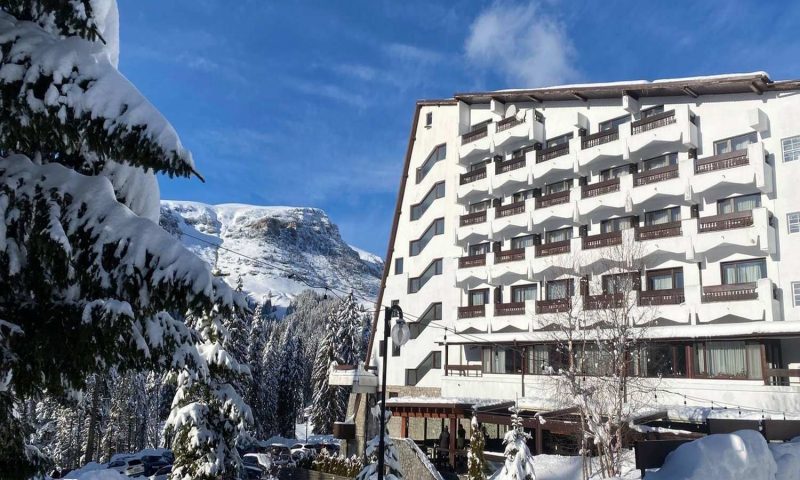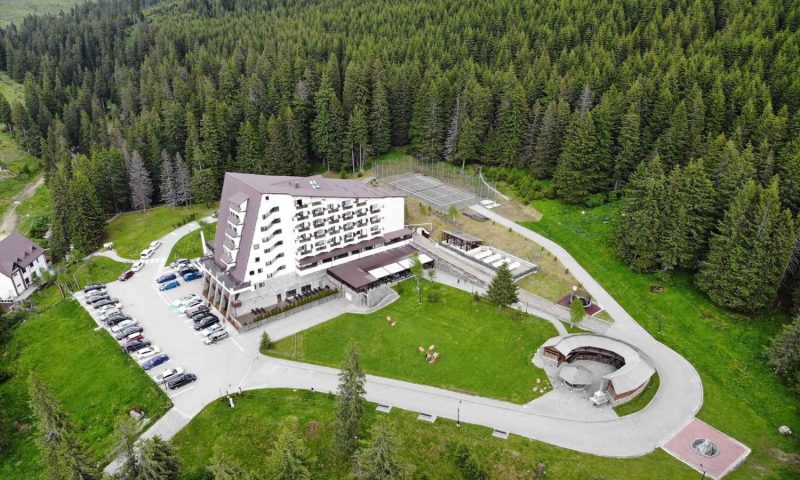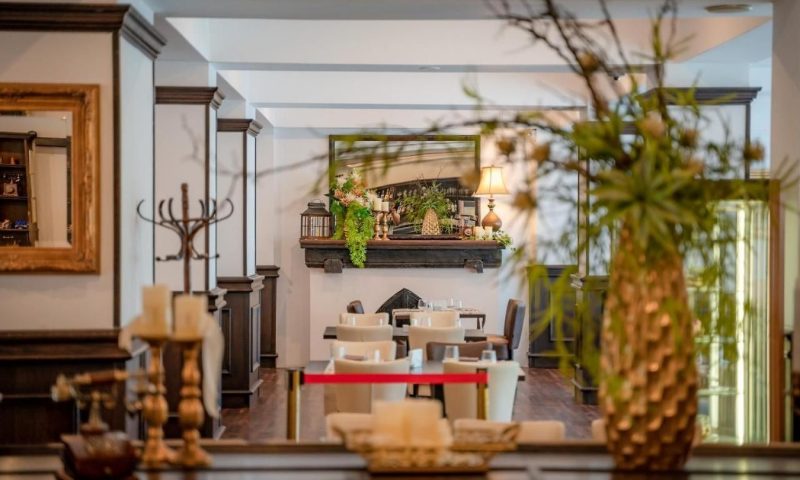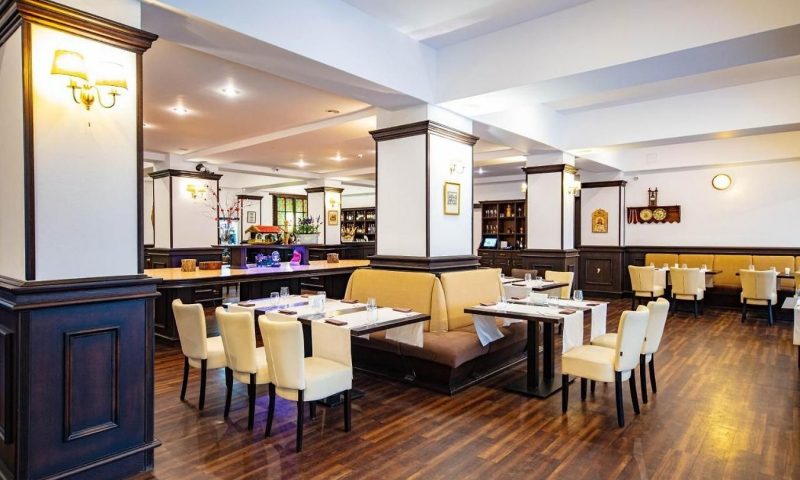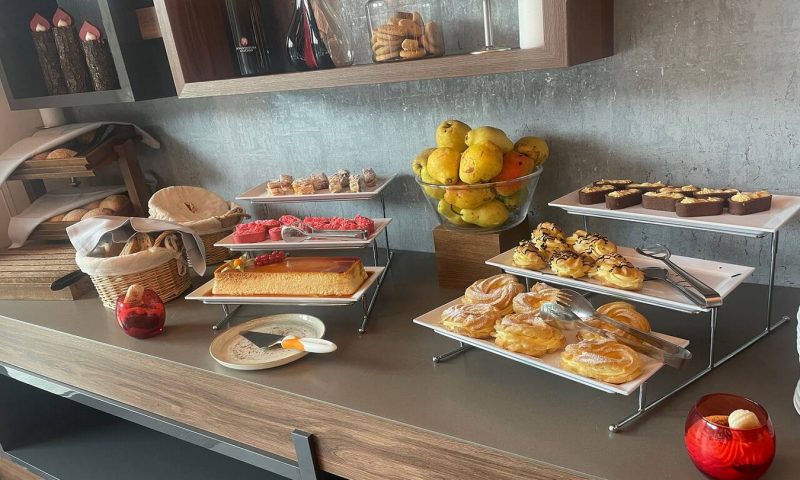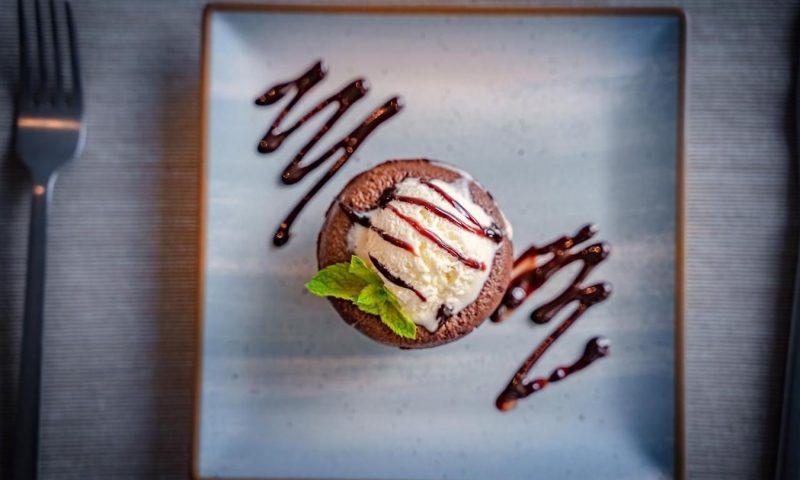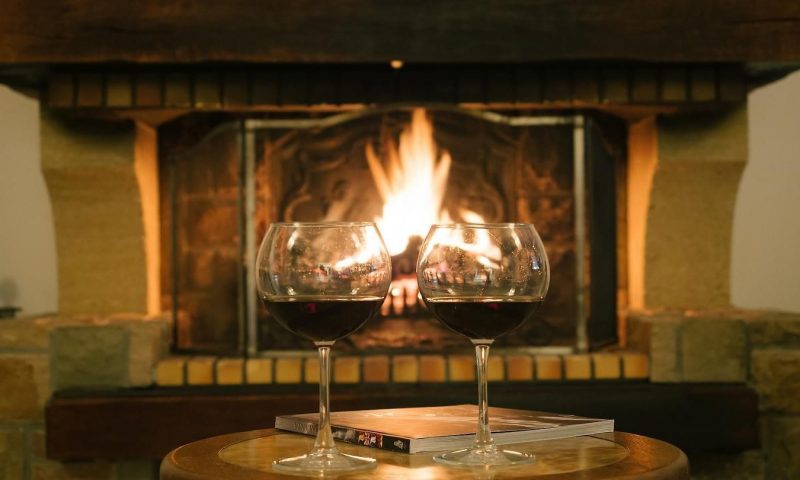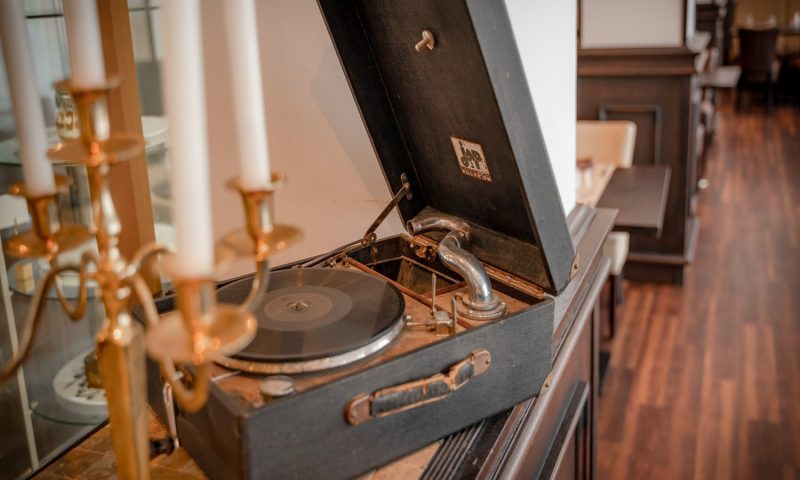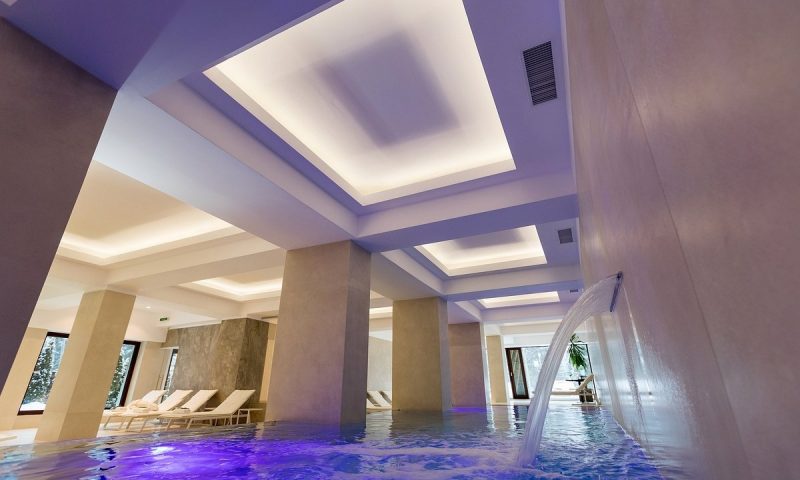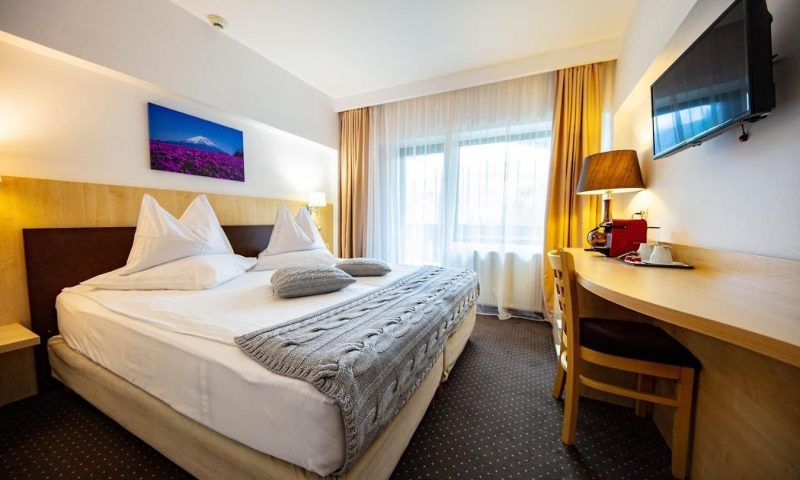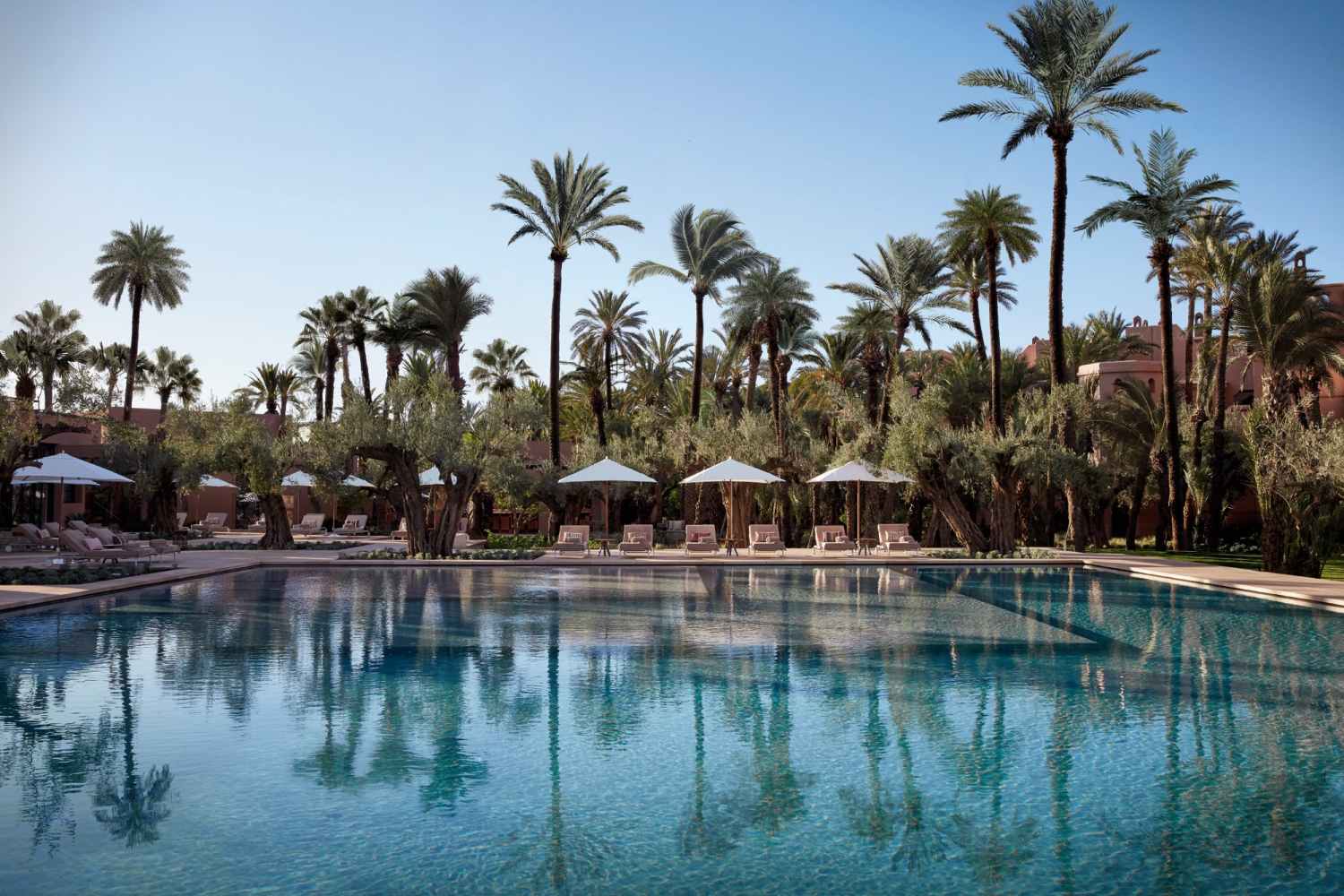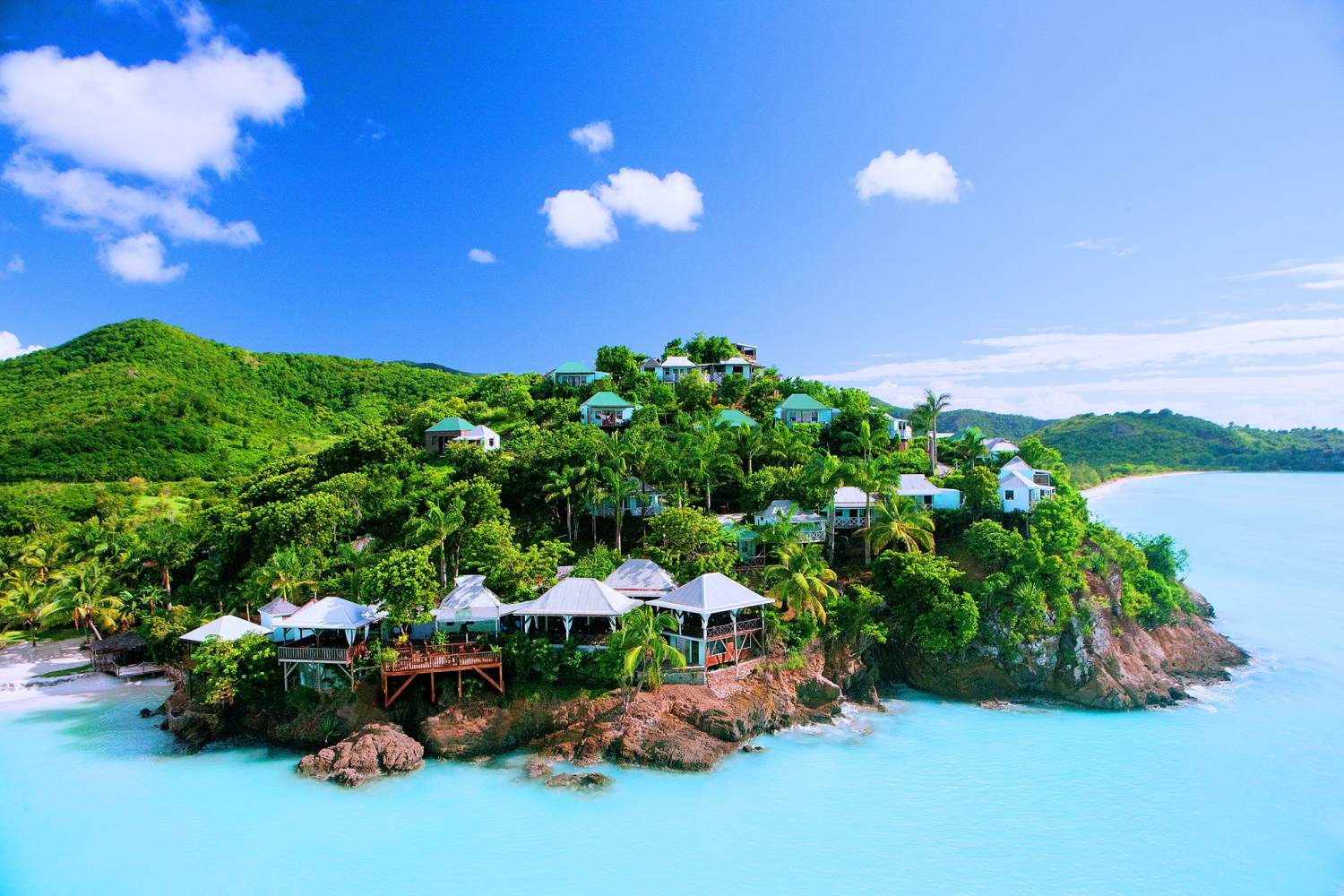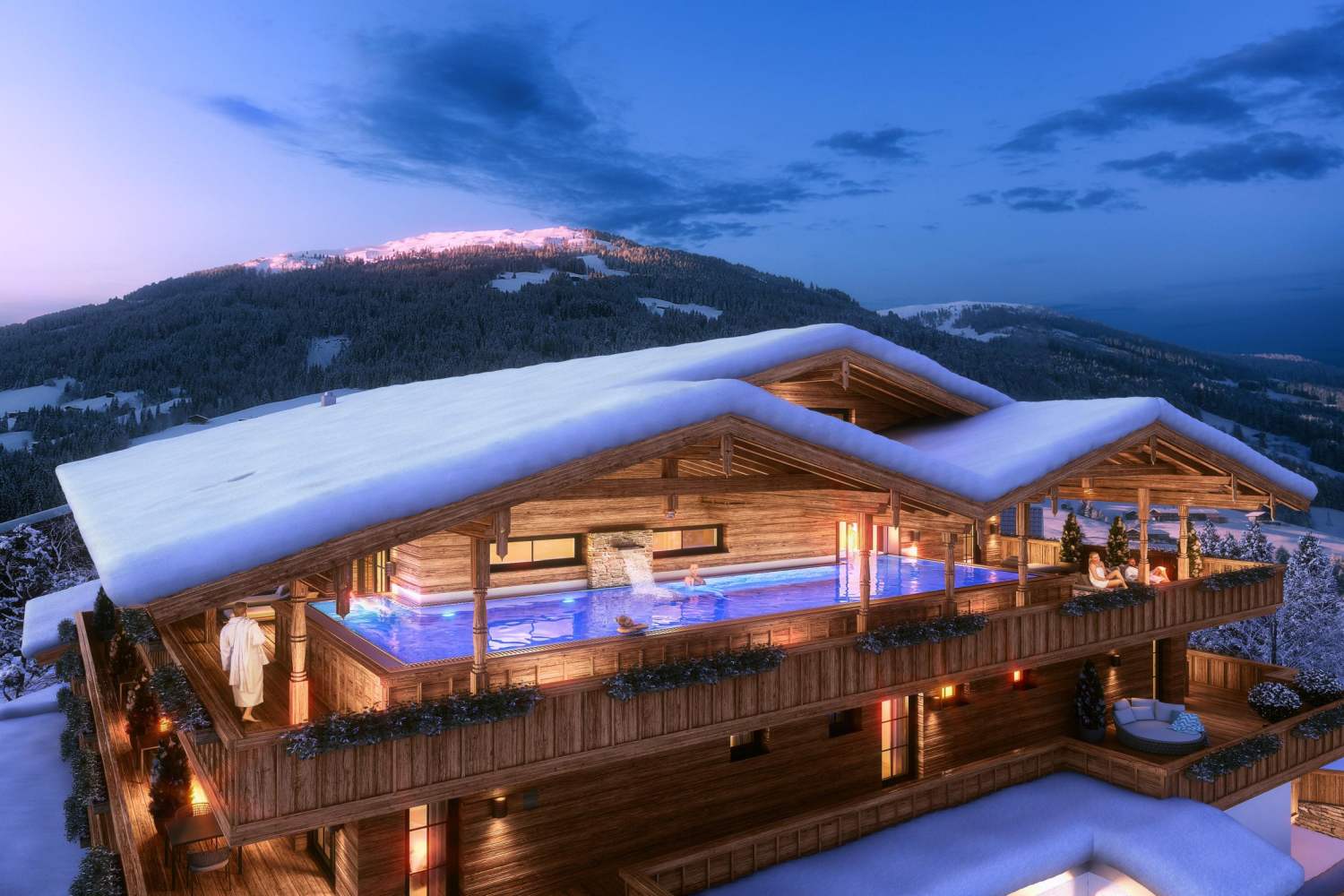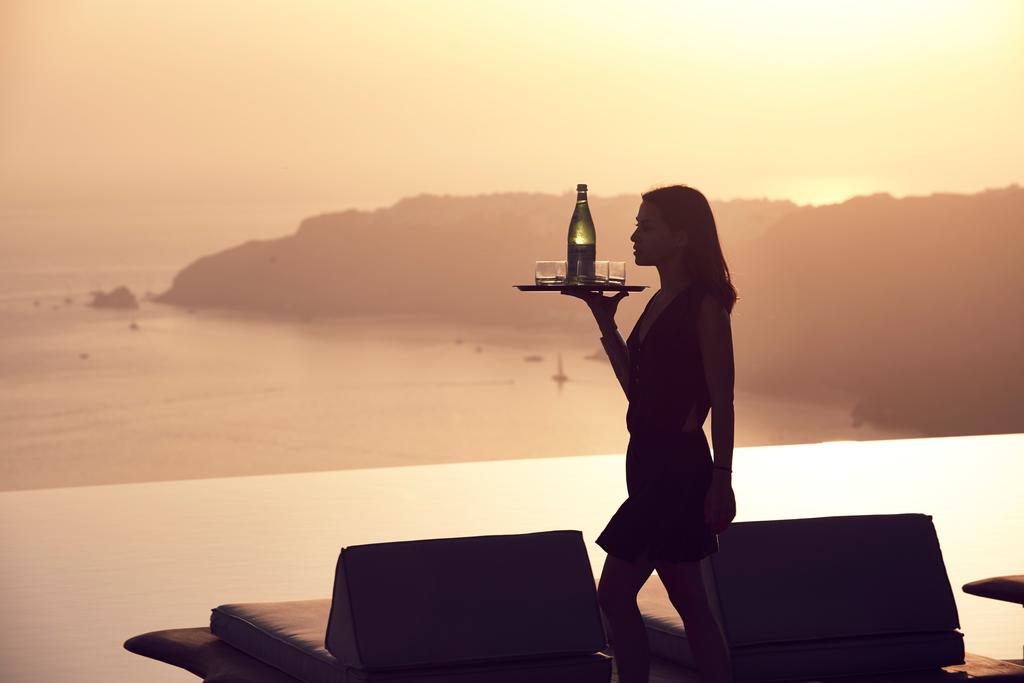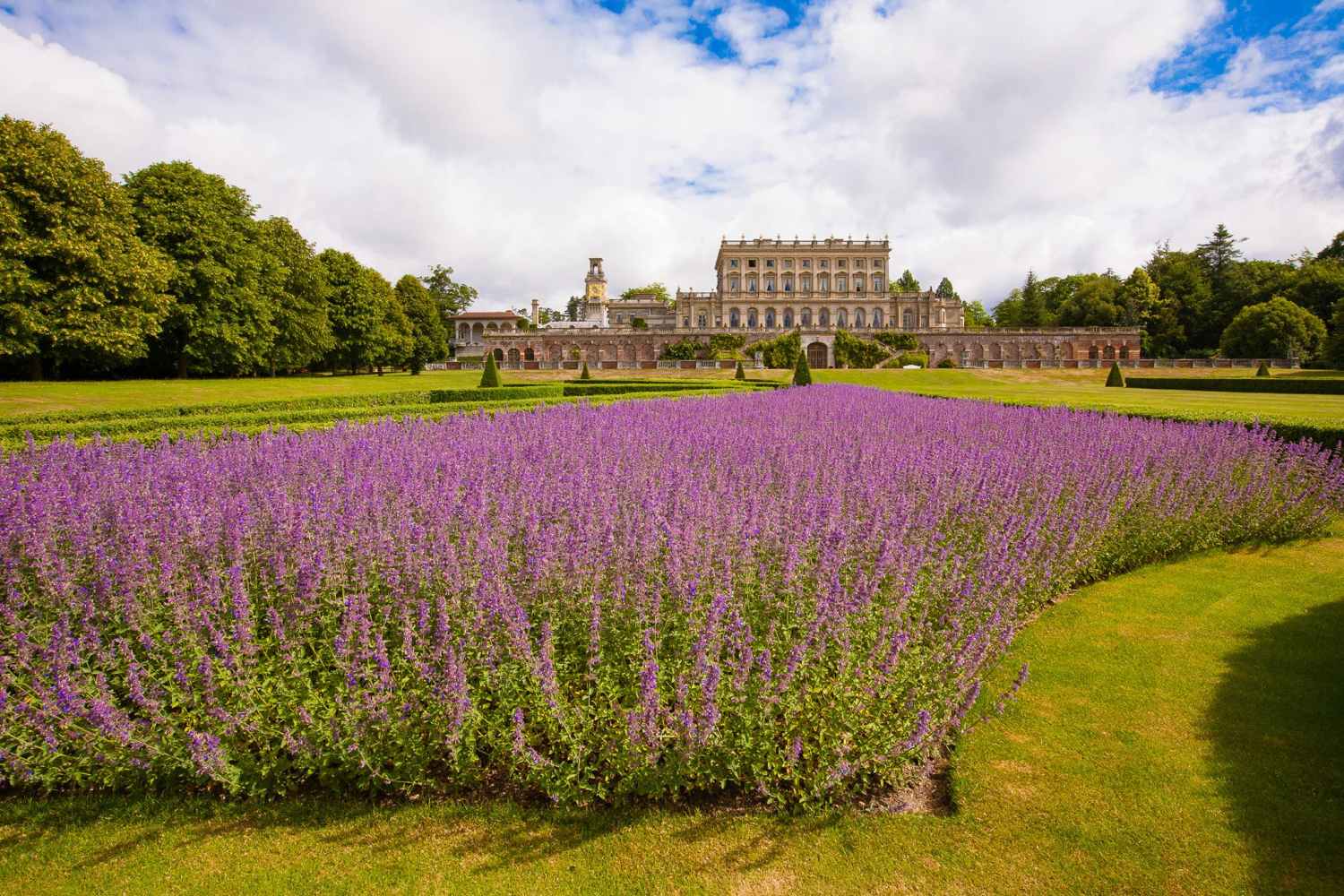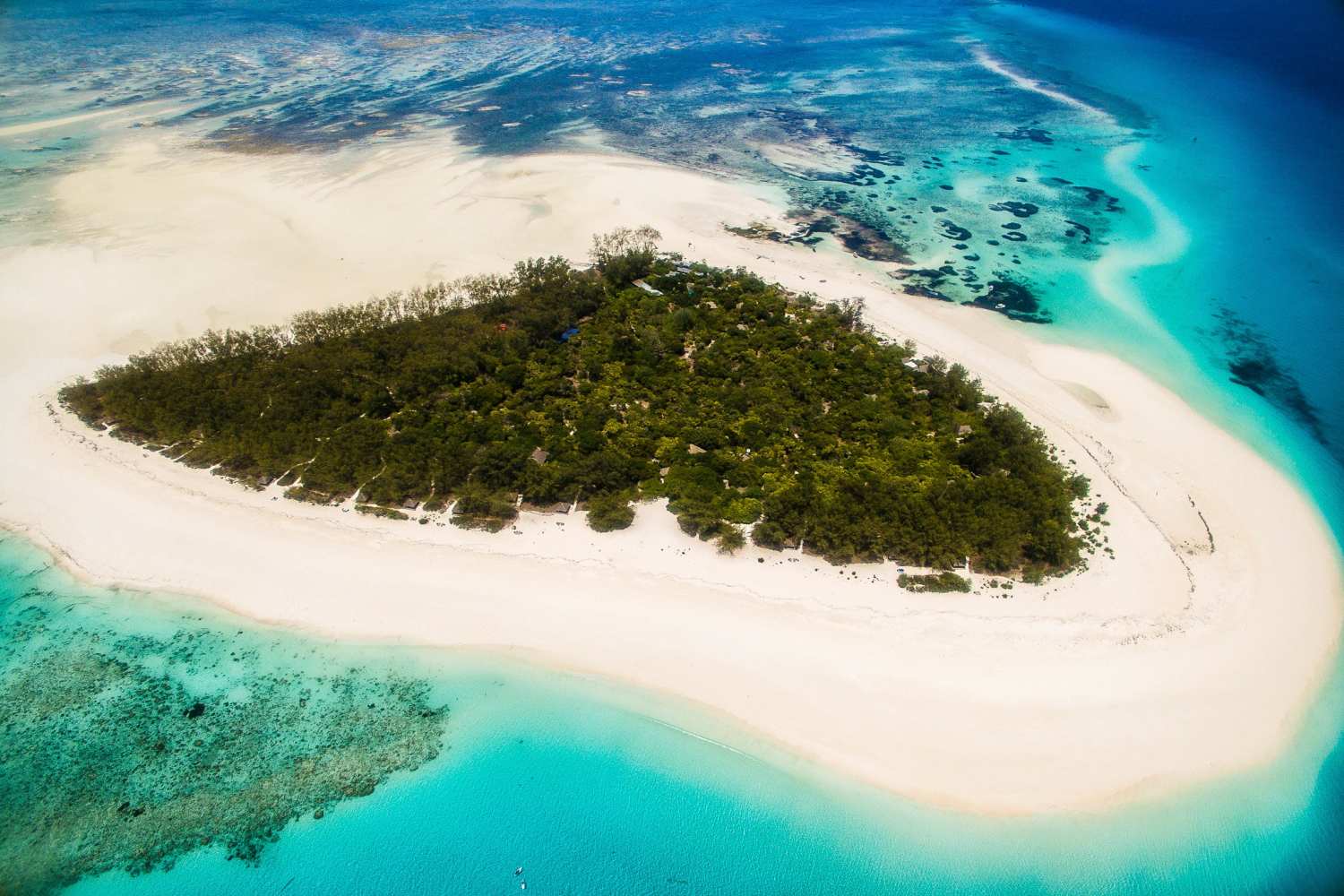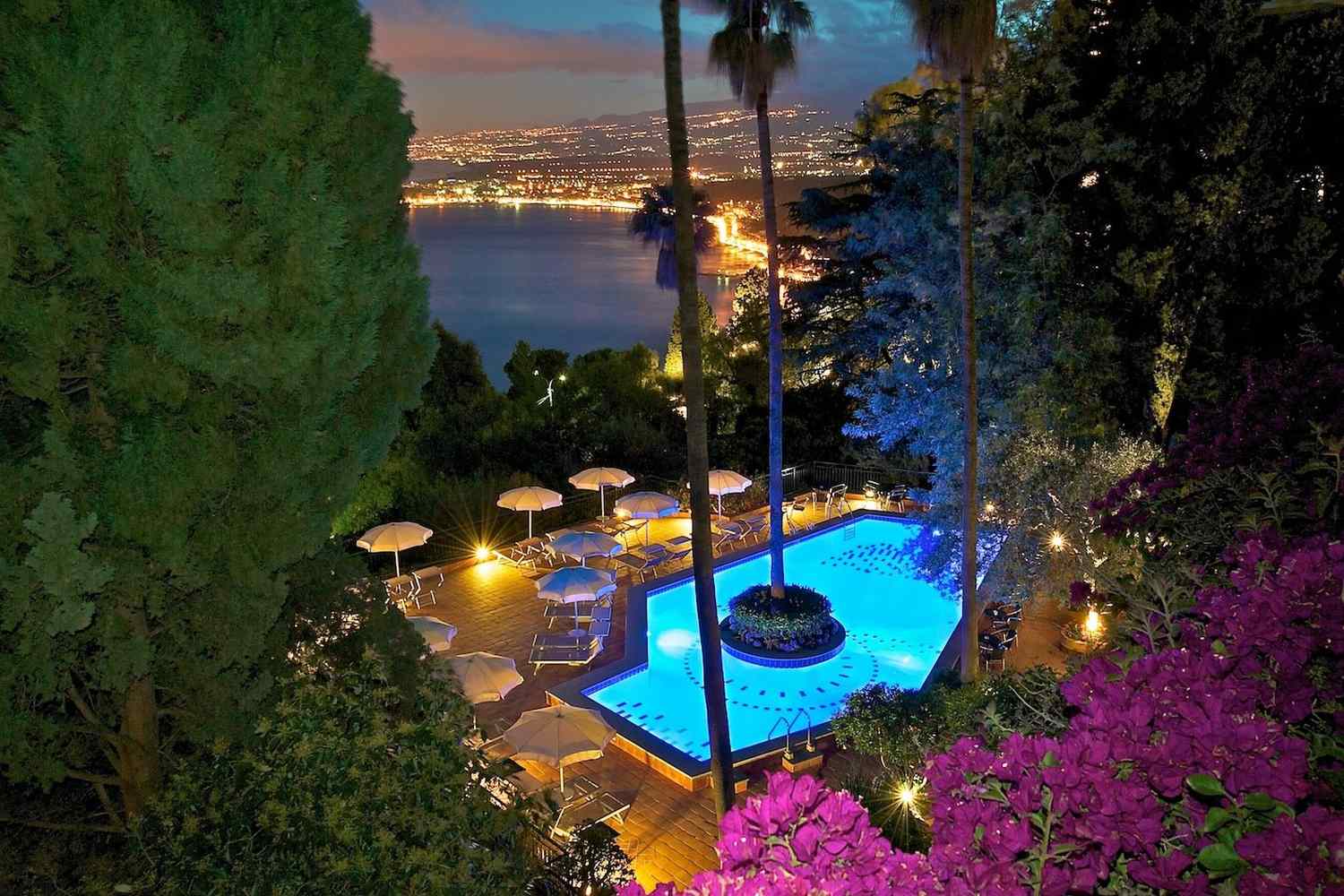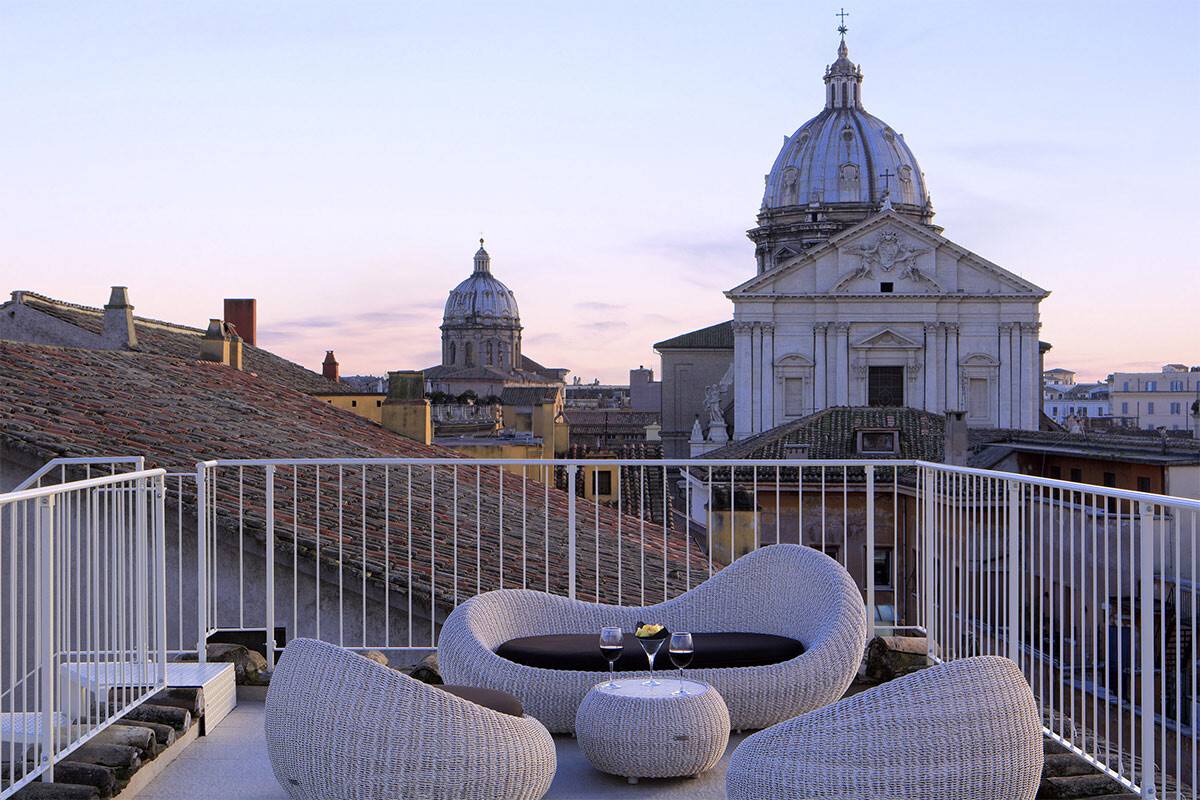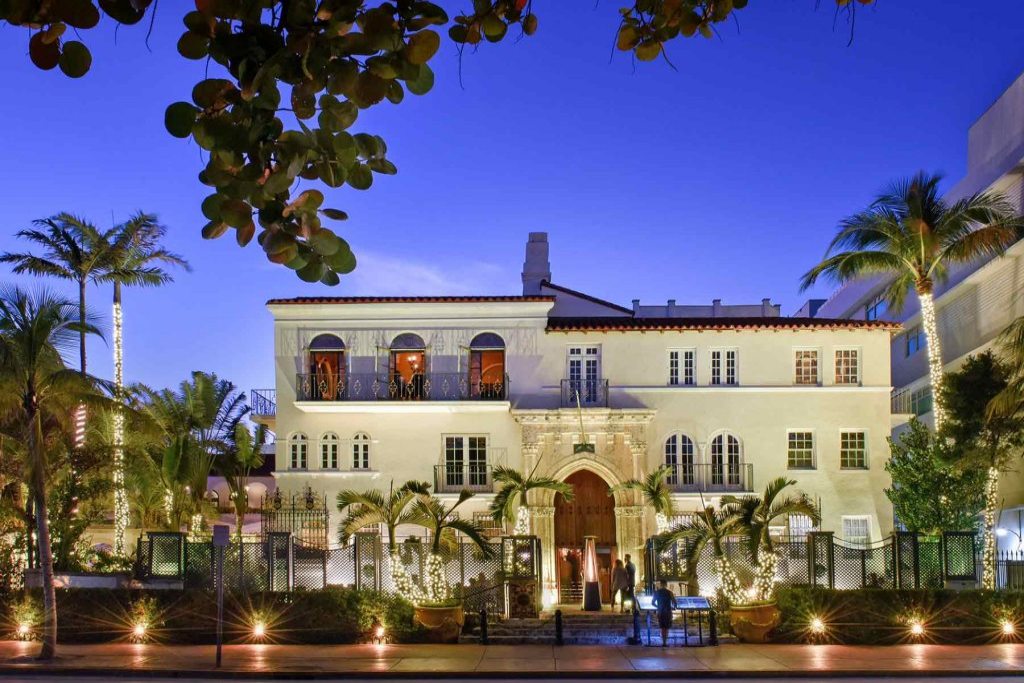The Hotel Pestera Sinaia is the favorite destination of families who come to recharge with positive energy and recreate their body and mind. Nature has been generous with us, giving us clean air, clear waters, mountains and forests. Nature lovers can enjoy idyllic landscapes, taking numerous tourist routes to Bolboci Lake through Tatar Tails or to Omu Peak passing near Babele and Sphinx.
Away from everyday stress, Hotel Peştera is situated in the Natural Park Bucegi at 1,600 meters above sea level, between the wonders of nature: Babele, Sphinx, Ialomita Cave, Tatars Gorge, and human wonders: Bolboci Lake, Ialomita Cave Monastery.
THE HISTORY
“Casa Pestera” was the name of the first tourist shelter built in Poiana Crucii near the Pestera lalomitei Monastery. The initiative belonged to Mihai Haret, grandson of the scientist Spiru Haret. Mihai Haret is the founder of the tourist movement in Romania and was a Member of the French Alpine Club and a Member of the Committee of the Royal Romanian Society of Geography.
The construction of the Cave House started in May 1923. In the autumn of the same year, more precisely on September 21st, the inauguration took place in the presence of more than 60 mountain lovers. Built using exclusively local wood, the shelter house was the property of the association “Hanul Drumetului”, a company founded in 1921 and which in 1926 became TCR Touring-Clubul Romaniei.
From 1924 until the spring of 1925, the cottage was extended and refurbished, as the number of tourists in the Bucegi had increased significantly and the initial construction had become uninhabitable, especially in summer. More than 200 people attended the new inauguration, although the event took place on 29 June 1925, a cold summer day with a blizzard. Among the early period cabaneurs was the legendary Niculaie Butmaloiu.
Until 1930, the “Cave House” was improved in terms of tourist comfort and the possibilities of exploitation of the lodge, as claimed by the president of the Touring-Club of Romania, Mihai Haret. He also noted for the cultural magazine “Boabe de grâu” in 1930: “The repairs have been made up to date, necessitated by the many damages caused every winter by snow, frost or hurricanes”.
In 1930 the Cave House had 40 beds with bedsprings and wool mattresses, pillows and blankets, all distributed in five rooms on the ground floor and three in the attic. The cottage also had a dining room with a library and museum in formation, a caretaker’s room, a kitchen and a cellar. In another part of the “Cave House” there was a stable for cows, a workshop, a special room for photography and a room for horseback riding, with 6 places.” from Wheat Grains magazine.
UPPER FLOOR SUITE VIEW BABELE
The suite offers great comfort through the generous space at your disposal. The position of the TV visually separates the sleeping area from the seating area with a sofa bed.
It is located on the top floor.
RESTAURANT 1610
Restaurant 1610 offers you Romanian dishes cooked with great skill by our team of chefs. Bread is fresh, homemade, every day. Because freshness is a must in gastronomy, we use the best products and ingredients. The restaurant has a maximum capacity of 120 people.
CAFE BAR
In the lobby of the Reception you will find the Cafe Bar where we offer you a rich menu of drinks. A wonderful place to relax and a great place for socializing.
OLD HOUSE
The Old House is the remaining part of the old Pestera House, built in 1940. Currently, there is a multifunctional lounge, ideal for private conferences or parties.
SWIMMING POOL
The swimming pool is open between 10.00 – 22.00, only for the hotel guests. Child access is only allowed with an adult. The Pool’s capacity is 25 people. The depth of the Pool is 1.3 m
TOURIST ATTRACTIONS
Upon request, guided mountain tours with mountain rescue assistance can be organized, exploring various routes such as Scropoasa Lake, Bolboci Lake, Tatarului Gorges, Omu Peak, Babele Cabin, the Sphinx, Piatra Arsă, the Doamnele Massif, or the Ursilor Pass.
“Ialomița Cave,” the most visited cave in the Bucegi Mountains, represents a point of great interest for tourism in Dâmbovița County. Hermits sought refuge at the sources of the Ialomița River as early as the 15th century, but the Ialomița Monastery was built in the 15th century, right at the entrance to the Ialomița Cave.
Ialomița Cave is located on the right slope of the Ialomița Gorges, in the town of Moroeni, Dâmbovița County, on Mount Bătrâna, about 10 km from the sources of the Ialomița River, at an altitude of 1,530 m.
IALOMITA CAVE
Right at the entrance of the Ialomița Cave is the Monastery of Ialomița, built in the 16th century and founded by Mihnea the Evil, the voivode of Wallachia. It is suspected that the hermitage of Mihnea the Evil might have been burned down and rebuilt several times, constructed from spruce logs, adorned beautifully from top to bottom with intricately carved designs.
THE MONASTERY OF THE IALOMITA CAVE
Bucegi Natural Park is one of the 27 natural and national parks in Romania. The Bucegi Mountains area, mentioned since the 15th century, was proposed for protection as early as 1936, owing to its unique landscapes and the diversity of plant and animal species specific to this massif.
BUCEGI NATURAL PARK
Bolboci is a vast lake, created by the artificial damming of the Ialomița River in 1988. Into Lake Bolboci flow the rivers Blana, Nucet, Bolboci, and Plaiul Mircii. Lake Bolboci is one of the most beautiful and spectacular places in the country, which, above all, has retained its wild naturalness. This is precisely what makes Lake Bolboci one of the most visited mountain lakes in Romania.
BOLBOCI LAKE
Vârful Omu in the Bucegi Mountains is the sixth-highest mountain peak in Romania, located in the Bucegi Massif, representing the highest point of this massif. On Omu Peak, you can find Cabana Omu (Omu Cabin), as well as the Omu Peak Meteorological Station, which can be considered the highest permanently populated place in Romania.
OMU PEAK
Tatarului Gorges constitutes a nationally protected area corresponding to the IUCN category IV (mixed-type natural reserve) located in Dâmbovița County, within the administrative territory of Moroeni commune.
This natural area, covering 144.30 hectares, is situated in the northeastern extremity of Dâmbovița County in the Bucegi Mountains, between the Padina Plateau and Lake Bolboci, at an average altitude of 1,800 meters.
HIKING ROUTES
On request can be organized with assistance and guide to the lifeguard , various mountain tourist routes : Scropoasa Lake, Bolboci Lake, Tatar Tails, Omu Peak, Babele, Sphinx.
PESTERA HOTEL – OMU PEAK CABIN
From the Pestera Hotel (1610m) the trail starts to the north, leaves the Cocorei Valley and passes through the meadows of a wide plateau, located between the Ialomița Valley (left) and Cocorei Valley (right). After 10-15 min. we reach the north end of the plateau, at a branching of roads (1640m). Before, towards Omu Peak, through the Obârşiei Valley, a blue band mark. Our route continues to the right, in a straight climb on the foot of Babelor’s Foot and then to the ridge.
Continuing the climb along the crest of the Babelor’s Foot, the path crosses through the boulders and reaches a threshold at the base of a steep rocky area (1980m); turn left, and describing a serpentine, slip through a small rocky gorge and exit over the rocky area (2040m). From here we can easily climb through the meadows below the Babelor ridge, cross some villages, and after 20-30 min. we reach the ridge at Babele Chalet (2200m).
PESTERA HOTEL – BABELE CABIN
From Hotel Peștera (1610m), the trail heads east-southeast through the Cocora forest behind the hotel, then through the Vârful cu Brădet clearing at the upper limit of the forest (1750m). The path continues along the crest of Vârfurile Mari, on its southern flank, and after 10-15 minutes from the clearing, we emerge into an open area on the ridge.
We continue east, and soon the trail leaves the ridge, crossing Vâlcelul Cocorei, and from there, we descend towards the bed of the Lăptici Valley (1865m). We cross the stream, ascend gently, and reach the edge of the plateau in the Cocora – Lăptici Saddle, where the ascent ceases.
From this point, the trail crosses the Sinaia – Dichiu – Babele road, and after about 10-15 minutes of gradual descent, it crosses the Valley of Izvorul Dorului, where, parallel to the Vâlcelul Jepilor Mari, we approach the edge of the juniper thicket. We enter the road and soon arrive at Cabana Piatra Arsă (1950m).
PESTERA HOTEL – PIATRA ARSA CABIN
De la Hotel Pestera (1610m), the path heads north, crossing the Cocorei Valley and passing through the meadows of a wide, gently sloping plateau situated between the Cocorei Valley (on the right) and the Ialomița Valley (on the left). After 10-15 minutes, we reach the northern edge of the plateau at a trail junction (1640m, marked by a post).
The path continues straight ahead, ascending along the side. Crossing through a wide curve of Valcelul Piciorului Babelor, the trail ascends on the western flank of the Piciorul Babelor ridge along a small valley descending on the left.
At the base of the valley, we reach the ridge forming the frontal moraine of the Obârșia Ialomiței Valley, where we descend gently on the other side and soon cross the Valea Sugarilor (Sugar Valley). We continue with a slight ascent to the north, along the long ridge that separates the Obârșia Ialomiței Valley from a ravine descending from the slope of Mount Obârșia.
At the end of this ridge, the trail passes through the meadows on the western slope of the Obârșia and then leads under a rocky crest (1885m). The path ascends gently along the lower part of the valley, still on the slope of the Obârșia, crossing a series of springs. On the left, beyond the valley, rises the western slope of Mount Doamnele, and on the right above, the western cliff of Mount Obârșia.
After 1 – 1½ hours from Hotel Pestera, we reach the base of the high step between the lower and upper caldera of the valley, where the Obârșiei Waterfall forms. We cross the Izvorul Obârșiei stream coming from the right (1990m) and then, through several switchbacks, ascend the steep slope of the step, reaching the threshold of the upper caldera (2110m).
We continue with a slight ascent, parallel to the course of the valley (which, from the waterfall upward, is named Valea Bisericii – Church Valley), then climb a low secondary step, cross the first ravine at the head of the valley (2250m), and reach the platform at the end of the upper caldera of the valley.
To the left, towards the middle of the caldera, rises the immense limestone block with the vertical and polished frontal wall, Mecetul Turcesc; ahead to the north, above the caldera, is Vf. Găvanele (2472m); to the north-northeast, Vf. Văii Cerbului; to the northeast, Curmătura Văii Cerbului; on the right, Colții Obârșiei. Leaving Mecetul Turcesc on the left, we climb initially steeply, then through several switchbacks along the slope under Spinarea Doamnelor and Vf. Găvanele, and after about 20 minutes from the bottom of the valley, we meet the trail marked with a yellow stripe, coming from Babele.
Immediately, the path leads us into a saddle near the rocky block, prominent, forming Vf. Văii Cerbului, on the ridge separating the Obârșia Ialomiței Valley from the Valea Cerbului (2360m).
To the north-northwest is Vf. Găvanele; to the north, Vf. Bucura; to the east-northeast, Colții Morarului; to the east, Valea Cerbului; to the east-southeast, Vf. Coştila (2498m); to the south-southeast, Colții Obârșiei (2480m); to the southwest, Valea Obârșia Ialomiței; to the west-southwest, beyond the valley, Culmea Doamnele.
Through several short switchbacks, we continue the steep ascent along the ridge until under the white limestone block forming Vf. Găvanele. From here, the trail crosses the side facing Valea Cerbului, leaving on the left a winter variation of the path that steeply ascends to the ridge under the rocks, then continues along the slope under Vf. Bucura, and soon leads us to Vf. Omu, at the cabin (2505m).
